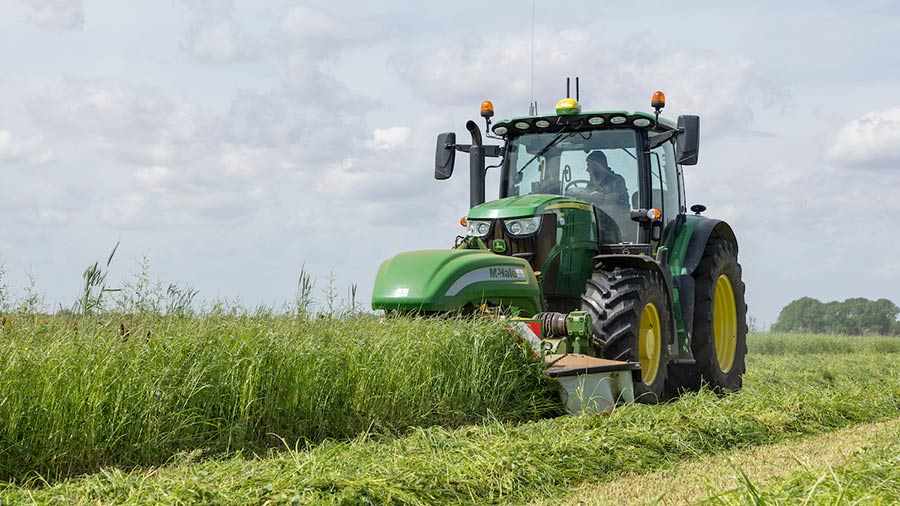Three-cut silage: Go for leaves, not bulk, to lower costs
 © Gary Naylor Photography
© Gary Naylor Photography Three-cut silage systems can take first cut a week earlier next year and still get the same yield, plus better quality. Scheduling all three cuts in the clamp before the longest day will also give more aftermath grazing.
Reviewing this year’s silage-making conditions, Dr Dave Davies of Silage Solutions says farmers need to adapt to changing weather patterns.
See also: Why multicut silage is worth higher contracting fees for farmer
Anyone wanting to produce milk or meat from preserved forage needs to be targeting cutting date to grass growth stage. It shouldn’t be done on a traditional calendar date in early May.
“Ideally, first cut is at most six weeks after the field has been shut up for silage and before seed stems appear. Then cut at a maximum [of] six-weekly intervals to maintain a quality, leafy crop,” he explains.
The key to correct timing is to inspect leys regularly and mow before stem formation.
Focus on quality
Cutting a younger, leafier crop leads to faster wilting and lower dry matter losses during harvest and storage, says Dave.
As a conservative guide, mowing intervals two weeks earlier than the standard six to seven weeks will add 1MJ/kg dry matter (DM) to energy levels and another 2%/kg DM of crude protein in the clamped forage.
Over the year, focusing on quality, rather than volume, means less silage is needed and harvest costs are lower, he adds.
Furthermore, a sward cut at a leafy stage can recover more quickly after a dry spell or drought.
“When a ley is cut at the leafy stage, any rainfall fuels fresh growth. Leaving the grass plant to bulk up leads to leaf senescence.
“Taller forage takes two to three weeks longer to recover after a drought and, therefore, it’s not growing.”
Dave points out that in wet conditions, a heavy crop of grass will take two days to dry out. Mature, dense swards also risk the wrong bacteria and fungi entering the clamp.
This can lead to issues with mycotoxins, or affect silage fermentation and clamp stability, he says.
